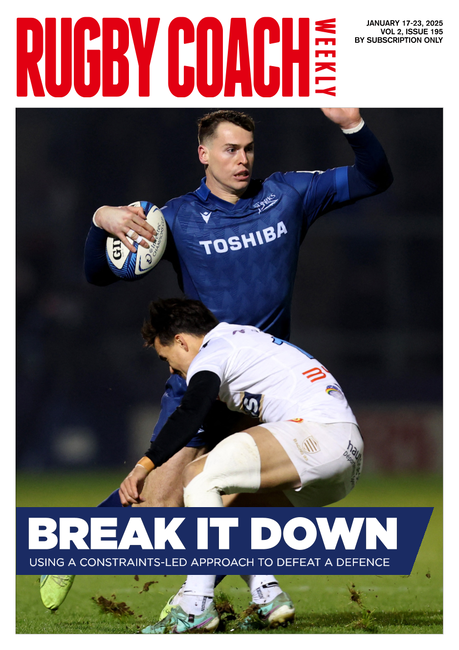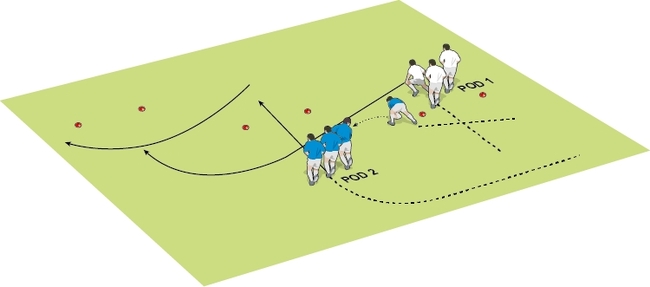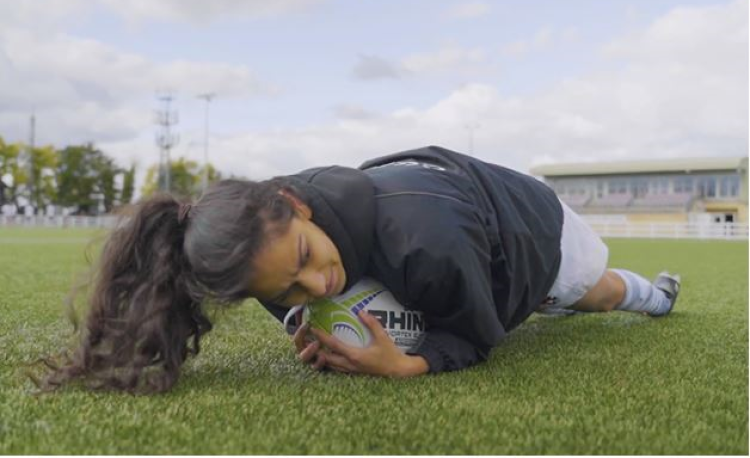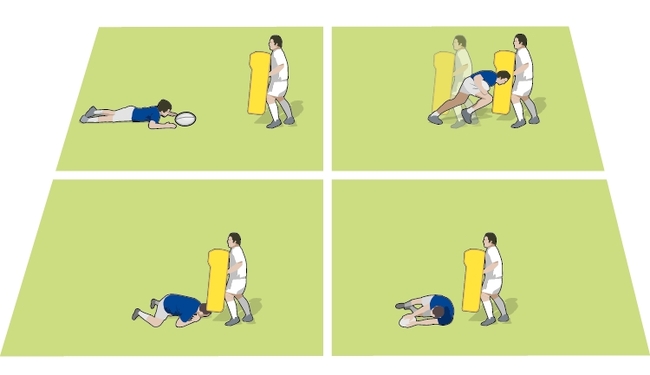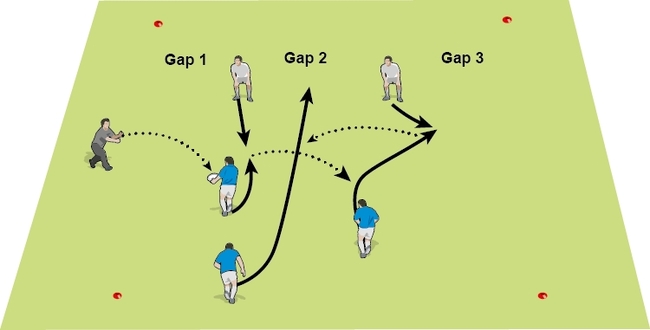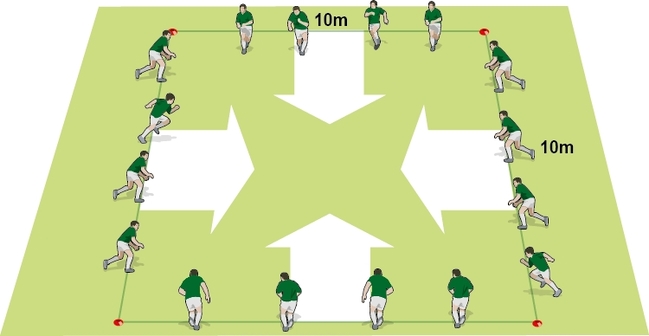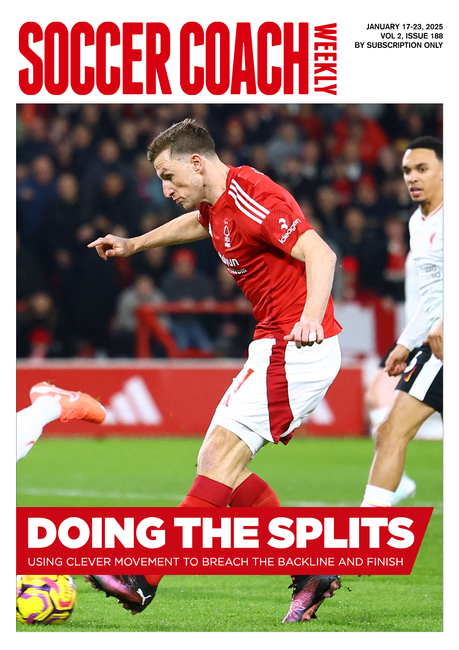VIDEO: 2 v 4 contact box (includes immediate and delayed feedback options)
Develop your attackers’ ability to keep possession under extreme pressure in a tackle situation, and your defenders’ counter -rucking skills. All this achieved in a tight area, with plenty of opportunities for immediate and delayed feedback.
- Put two attackers in the middle of a 5m box. Put four defenders on each side of the box, each standing on a different coloured cone.
- Have the two attackers pass the ball between them. Then call out a colour. The current ball carrier attacks that colour.
- The nearest defender tackles the ball carrier and the other defenders attempt to steal the ball within five seconds of the tackle.
- The other attacker aims to protect the ball carrier on the ground.
- Play until a steal, infringement or the time is up. Swap roles and repeat.
TECHNIQUES
- Ball carrier: be busy on your feet and in the tackle to make it harder to steal the ball.
- Defenders: tackler, aim to get the ball carrier to the ground as quickly as possible. Other defenders, drive over the ball and take away the other attacker.
- All players on their feet and aiming to get their hips square (that is facing up the pitch).
COACHING
The countdown helps create some form of pressure on the defenders to win the ball back before other attackers might arrive. Change the countdown number to suit the team ability.
Referee the tackle area tough. Ask for immediate feedback if an infringement is made. For example: Why were you penalised? Or, what could you do differently next time?
Use delayed feedback through questions or challenges. Delayed feedback is where the players reflect in the moment on what they are doing, but you don’t review their actions until the exercise is finished.
Delayed feedback example questions: What could you do differently? How can you retain possession? How canyon put more pressure on the ball carrier? What techniques can you use to win back the ball?
Delayed feedback challenges: Change where the defenders start so they have to explore different entry angles. Change the attacking numbers, but have the new attacker start outside the box.
Also, note from the video, the ball carrier often has to think about where the "coloured" cone is. This delayed reaction means the player has to switch from "slow" thinking into "quick" thinking. Slow is a more unnatural situation, and quick is where they should not be "thinking" about their actions, they just need to be operating using their habits. We want the players to improve their quick thinking habits.
WHY YOU NEED BOTH TYPES OF FEEDBACK
Immediate feedback helps players see why they are making mistakes with a clear reference to what just happened. While that’s clearly important, especially if there is a safety issue, or they are infringing, the more powerful feedback is delayed. That means the players have a chance to explore and amend for themselves. At the end of that change process, you can assist them in deciding what was important.
If players get used to immediate feedback, it can become a crutch. Rather than thinking and solving problems for themselves, they rely on you tell them what went wrong and so change their behaviour based on your explicit instructions.
Delayed feedback, either through silence or through "stretching" questions, forces them to take more control of their learning.
Hence, you need to keep a healthy balance between the two. This exercise is an excellent opportunity to develop them and to develop your own coaching.
Newsletter Sign Up
Coaches Testimonials

Gerald Kearney, Downtown Las Vegas Soccer Club

Paul Butler, Florida, USA

Rick Shields, Springboro, USA

Tony Green, Pierrefonds Titans, Quebec, Canada
Subscribe Today
Be a more effective, more successful rugby coach
In a recent survey 89% of subscribers said Rugby Coach Weekly makes them more confident, 91% said Rugby Coach Weekly makes them a more effective coach and 93% said Rugby Coach Weekly makes them more inspired.
Get Weekly Inspiration
All the latest techniques and approaches
Rugby Coach Weekly offers proven and easy to use rugby drills, coaching sessions, practice plans, small-sided games, warm-ups, training tips and advice.
We've been at the cutting edge of rugby coaching since we launched in 2005, creating resources for the grassroots youth coach, following best practice from around the world and insights from the professional game.


